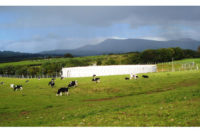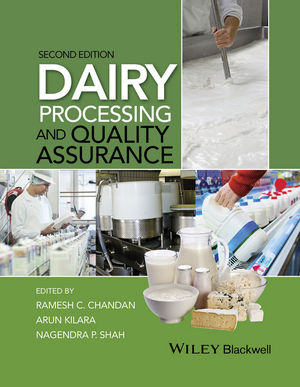Advancing dairy wastewater treatment
Given all these factors, developing an effective solution to treat wastewater — whether to meet industry regulations or your business goals — is critical.

From production to cleaning and sanitation, dairy operations produce wastewater from many sources that typically contain high levels of contaminants, suspended solids, organic compounds, ammonia compounds and fats, oils and grease (FOG). These compounds and contaminants can significantly impact ecosystems and public health if not properly treated.
Given all these factors, developing an effective solution to treat wastewater — whether to meet industry regulations or your business goals — is critical. At the same time, however, it isn’t always a clear-cut process, requiring the right combination of physical, chemical and biological processes rather than a one-size-fits-all solution.
To help you select the best wastewater treatment plan for your dairy processing application, this article provides a helpful overview of the types of contaminants you will encounter. It will also explore integrated wastewater technologies that not only effectively remove the contaminants, but also offer cost, energy and performance advantages.
The role of water in dairy applications
Dairy plants require high volumes of water for many applications. For example, dairy operations use water to dilute milk for pasteurization, homogenization and separation processes, which play a role in the production of milk, cheese, butter and yogurt. Dairy plants also use water to clean and sanitize floors and equipment, as well as to transport waste.
The wastewater generated from all these processes must be thoroughly treated to comply with regulations, protect the environment and safeguard public health. Many government bodies, for example, seek to limit the amount of pollutants, including biochemical oxygen demand (BOD), nitrogen and phosphorus that are discharged into bodies of water, thus preventing contaminants from harming aquatic life and degrading water quality. Treating wastewater from these applications also prevents the spread of harmful pathogens like E. coli, Salmonella and Listeria.
It is important to be familiar with the specific contaminants present within dairy wastewater, and the technologies that offer solutions to these challenges, in order to specify the optimal treatment solution. Here are some treatment methods:
Physical separation methods
Removing FOG and total suspended solids (TSS) from wastewater can be resolved using dissolved air flotation (DAF) technology, which removes non-soluble organics by dissolving pressurized air into water and forming tiny microbubbles. As these bubbles enter the flotation zone located within the DAF system, contaminant particles attach to the bubbles, lowering the particle density and causing the FOG and other non-soluble organics to separate from the wastewater and rise to the surface. The top surface layer of separated contaminants is then skimmed and collected into a sludge hopper.
While most dairy operations require this treatment to meet regulations, not all DAF systems are created equal. The best ones incorporate a compact design, low operational chemistry and energy costs, and high removal efficiency. The system features a cross-flow design that facilitates lower water velocities and better solid separation. To optimize the treatment process, the influent header includes multiple injection points, allowing the introduction of whitewater — a highly saturated pressurized stream of air and DAF influent that includes a polymer flocculant. The Ideal DAF features a cone-bottom design for easy settled sludge removal.
The Ideal DAF can also withstand demanding environments thanks to its heavy-duty yet lightweight polypropylene (PP) construction. In addition to extending the system’s service life, this PP construction offers excellent corrosion, pH and temperature resistance, as well as total dissolved solids (TDS) and saltwater tolerance.
Addressing biological contaminants
In addition to FOG, TSS and non-soluble organic compounds, dairy processing wastewater contains high levels of biological contaminations, such as, BOD, ammonia-nitrogen (NH3-N) and phosphorus. One common biological treatment method is the activated sludge process, which involves treating wastewater with bacteria.
These microorganisms promote their metabolism and growth as they degrade the organic material. As they grow, they consume organic matter, nutrients and other contaminants within the wastewater, producing carbon dioxide, water and biomass. This digested wastewater then gravity flows to a secondary clarifier for sedimentation of the bacteria. The bacteria returns to the head of the aeration tank while the clarified water discharges from the plant. Part of the return sludge, known as waste activated sludge (WAS), is wasted and disposed of.
Another biological treatment method uses a moving bed biofilm reactor (MBBR), which is a fixed-film process that addresses BOD removal, as well as nitrification and denitrification. This method relies on specially designed bio-media within the MBBR tank that enables bacterial growth. The media’s large, protected surface area provides enough space for biofilms to grow. These biofilms digest the organic matter in the wastewater and convert soluble material into biomass that can be removed downstream. Near the top of the tank, a stainless steel sieve allows water to exit the reactor while preventing the bio-media from escaping.
Phosphorous removal treatments
Contaminants like phosphorus and other nutrients must be removed before discharging the wastewater into the environment — a challenge that physical-chemical solutions can address. Adding coagulants and flocculants to the wastewater, for example, can remove suspended solids, while physical-chemical processes like ferric chloride and polyaluminum chloride (PAC) precipitation can remove the phosphorus.
How to achieve success
By implementing effective wastewater treatment methods, your dairy processing plant can comply with emerging regulations, meet business targets, reduce your treatment costs and minimize environmental impact. For additional assistance, it pays to work with wastewater treatment professionals with a long-standing history and track record of proven success, enabling you to navigate industry challenges and deploy an optimal solution.
SIDEBAR #1:
Stay Ahead of Evolving Standards
Many regulations require dairy facilities to monitor and report both the quantities and types of waste being generated. Keep in mind, the location of a plant, as well as the specific dairy products, may determine specific limitations.
Within the United States, the Environmental Protection Agency (EPA) sets national effluent standards under the Clean Water Act. This agency imposes different effluent limitations on facilities depending on the kinds of dairy products — butter versus cheese. Regulations may also vary based on a facility’s size and where it discharges wastewater. All of these regulations are subject to change over time. To ensure compliance and environmental protection, it’s critical to stay as up-to-date as possible on the latest regulations and best practices.
SIDEBAR #2:
Load-tolerant and Compact MBBR Systems
The WWW Ideal MBBR is a biological treatment system with one of the smallest footprints in the industry. It features excellent tolerance to load swings and temporary load deprivation. A stainless steel aeration manifold is installed at the bottom of the aerobic reactor to provide the dissolved oxygen for BOD removal and nitrification. For denitrification applications, the same bio-media is employed in an anoxic environment. Mechanical mixing, rather than blower air, creates an anoxic environment that facilitates better media mixing and fluidization. This system is highly resilient, simple to operate, requires low capital investment and can easily retrofit existing systems.
SIDEBAR #3:
World Water Works Provides Integrated Solutions
World Water Works specializes in developing successful, proven and resilient solutions in the dairy industry. We combine our innovative technologies with expert-level design and engineering teams to custom-tailor wastewater treatment systems that ensure satisfaction and compliance. To separate biomass and solids, placing an Ideal DAF system downstream of an MBBR tank is a compact solution.
Our solutions also can easily retrofit or upgrade existing wastewater treatment operations, such as upgrading lagoon systems with an MBBR or adding MBBR to overloaded activated sludge systems. We also pair our Ideal EQ, MBBR and DAF technology with our sludge dewatering system as an integrated solution, providing our customers with a turnkey solution for dairy wastewater treatment.
Photo courtesy of World Water Works.
Editor’s note: The views expressed in this column are those of the author only.
Looking for a reprint of this article?
From high-res PDFs to custom plaques, order your copy today!









